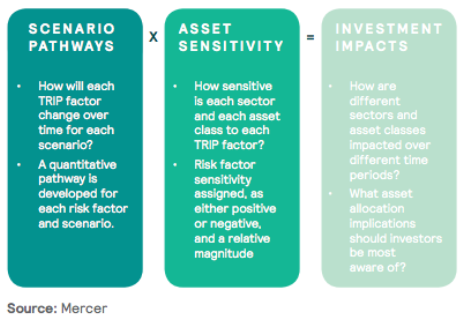While 2015 was a record-breaking year for climate and extreme weather events, 2015 and the beginning of 2016 also showed a clear uptick in concern from the market about the material risks of climate change.
This February, Larry Fink, the CEO of Blackrock, stated that companies should increase consideration of long term risks, particularly climate risks, into their business planning. Blackrock is the world’s largest investor with $4.6 trillion in assets under management.
In January, The World Economic Forum, for the first time, listed “failure to mitigate and adapt to changing climate” as its top global risk in its annual Global Risk Report. As a reviewer of the adaptation section of the 2013 risk report, I’ve watched this risk gradually rise to the top of concerns of many business and governmental leaders.
Adapt Ready expects the stringency and enforcement of climate risk disclosure, reporting and process management requirements to be more fully realized in the next few years (e.g., ISO will release ISO standards related to adaptation in 2017). However, the foundations of how investors, in particular, are increasingly grappling with this issue were on display from a multitude of sources.
Responding to the physical impacts of changing climate is no longer an “if” question but “how,” according to investment consulting company Cambridge Associates. Moody’s and Standard & Poor’s are intensifying climate risk research and already consider climate risks in their credit ratings.
The Economist Intelligence Unit released The cost of inaction: recognising the value at risk last year. The report highlights the direct and indirect climate impacts that the asset management industry must address due to this “probably irreversible problem beset by substantial uncertainty.” They take a meta view of global financial losses, considering different discount rate and temperature scenarios into account. They note:
If investment managers are aware of the extent of climate risk to the long-term value of the portfolios they manage, then it could be argued that to ignore it is a breach of their fiduciary duty.
Although in a macroeconomic sense, The Economist (possibly coining) uses the phrase Climate Value at Risk or ClimateVaR — the size of the loss a portfolio may experience, within a given time horizon, at a particular probability. They estimate a global ClimateVaR to be in present values US$4.2 Trillion from the perspective of a private investor. This is just as applicable from a corporate perspective and a key concept Adapt Ready uses in its technology.
Mercer’s Investing in a Time of Climate Change lays out a risk factor framework “TRIP” (Technology, Resource availability, Impact of physical damages and Policy) that is affected by different climate scenarios (e.g. rapid decarbonization corresponding with limited warming of 2°C versus significant climate change of 4°C or more). It assess the degree to which different asset and equity classes are sensitive to climate scenarios — agriculture and utilities have the most potential risk.

This last point is a harbinger of what will almost certainly be a fast-moving, and perhaps sudden, ESG investment requirement — providing company-level information on the physical risks from climate change and extreme weather.
Adapt Ready is dedicated to becoming the leader in providing companies with this climate information, not just to provide to investors, but, so that customers can gain competitive advantage, reduce risk and innovate.
Keep up with our Adapt Now Blog to learn how we are providing a full-service technological solution to address this rapidly emerging risk.


